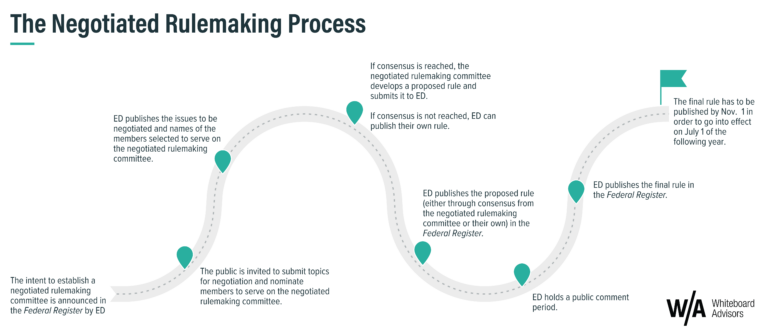As we start to move through 2022, three things are certain.
- First, the end of pandemic-related education challenges is not in sight.
- Second, states and districts have unprecedented, new funding ($190b through 2024) to tackle yawning academic gaps, mental health challenges, and a shrinking pool of teachers and school administrators.
- Third, the politics of education will take center stage in an election year where local decision-making is at the forefront of the national agenda.
It’s going to be a hectic year for education leaders.
To help bring some clarity to the complexity, the Whiteboard Advisors team is monitoring the policies, politics and trends that influence the behavior of school officials – and impact the environment for student learning.
As we talk with district leaders and policymakers around the country, five big themes have emerged at the start of the year. This is not an exhaustive list. But if you’re interested in understanding what’s on the mind of education leaders, it’s a good start. So what’s on your whiteboard? Let us know how we can help.
Teacher fatigue.
The pandemic is wearing down school staff and compounding pervasive teacher shortages.
According to a 2021 survey, “school employees reported higher levels of anxiety (34%), stress (52%) and burnout (52%) during the COVID-19 pandemic than other government employees. By comparison, 29% of other government workers reported feeling anxious, 35% being stressed, and 34% feeling burnt out.”
Unfortunately, 2022 isn’t bringing relief, and the need to find effective ways to counter the stress is urgent.
Student and community engagement.
The pandemic has fueled a troubling spike in chronic absenteeism. More and more students are missing from schools, and academic progress is taking a hit.
According to the 2021 FutureED report, one large district saw its chronic absenteeism rate climb from 21 to 34%.
School officials are trying to better (re-) engage students, recognize the progress they are making given the situations, and prioritizing the role that joy plays to improve school climate.
High-dosage tutoring.
The majority of states and large districts are now in the throes of implementing new, large-scale tutoring programs.
States like Tennessee and Texas, have joined major school districts including Chicago Public Schools and Montgomery County in deploying, investing stimulus funds to deliver individualized support for students.
Against that backdrop, quantifying impact and quality is a growing concern. Will the end of stimulus funds and personnel shortages sew uncertainty into sustainability? Or, is tutoring here to say in the ‘new normal’?
Budget and instructional justification.
The stories that school leaders tell about their stewardship of public funds matters more than ever.
Expenditure transparency was a big deal heading into the pandemic. Now, with historic stimulus investments, policymakers and parents are demanding to know more about what is being taught, why, and with what materials. District and school leaders are in turn, carefully measuring their statements and – investment plans.
As policymakers continue to scrutinize investments and as school and district leaders weigh what they “got for their money,” expenditure transparency is poised to be a top issue in an election year.
Still ESSER.
The influx of one-time funding through ESSER has created concern related to a fiscal “cliff,” but the “cliff” analogy may be all wrong.
We’re beginning to use a “wave” analogy to explain the ways in which education leaders are extending the fiscal window to implement sustainable instructional and organizational improvements.
W/A is modeling, based on state work and guidance, spending scenarios depicting how school districts will use ESSER funds in coordination with state and local revenue.
Over the next few weeks, W/A Research will deliver analysis and useful insights on these matters, but it’s not enough to simply dive into one or a few of these matters. These are all connected in a “butterfly effect” manner. It’s complex — which is why clarity and simplicity matter, and that’s what we strive to deliver to you and your team in the weeks ahead.
To learn more, join the W/A Research Subscription and our Monday webinar series, “The Breakdown: What’s Trending in K-12?” offered bi-weekly for subscribers.




